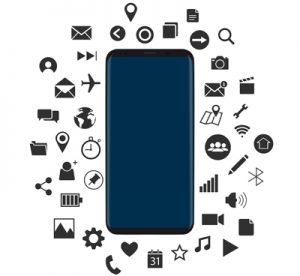The information society
For the past two decades, we have been living surrounded by technological devices that are connected to the Internet. They constantly offer us information, data and multimedia contents, and we dismiss some of these contents and use some others, whether we do it immediately or by including them into our digital storage system.

According to a study by the company Domo, every minute the two thousand and seven hundred million people in the world who have access to the Internet (as was calculated in June 2012) send over two hundred million e-mails, make two million Google searches, upload forty-eight hours of video to YouTube, write more than one hundred thousand Twitter messages, publish almost thirty thousand new articles in sites such as Tumblr or WordPress and upload more than six thousand pictures to Instagram and Flickr.
To obtain a graphic picture of this situation, see the link “Infographic on the amount of information a person may be exposed to in a single day”.
On Facebook Live we can watch live videos that are being created on Facebook at any given time.
According to Cisco’s forecasts for 2019, content traffic in the Internet will increase; this was something to be expected, given that more and more people will have a smartphone. A zettabyte of contents will be generated in a year.
This huge amount of data generated in the Internet provides valuable information for companies, because, after a thorough analysis, they are capable of identifying new opportunities and trends. This is called big data.
This set of data and their combinations makes it possible for companies to get to know their customers better so that they may meet their needs with new products, act faster and and more efficiently when changes arise and solve problems immediately.
How did we get here?
Until some years ago, Internet was a one-way channel. Only some privileged people could give their opinions, write and share information on the subjects they found interesting. That is how professional and corporate websites came to be. As the web evolved to the 2.0 web (in 2004; this is no longer such a new change, but still very timely), participating and sharing information, debating and giving one’s opinion is within everyone’s reach; we can do it using our cell phone, any time, all over the day. It has become normal for everybody, not just professionals, to generate content.
The Internet has become a place where all internet users may take part in the information system: creating contents, sharing, defining, editing, correcting, criticizing… This opens up the creation of digital contents to the more than four thousand million people in the world who are internet users, where contents are flexible, adaptable and short-lived.
They are short-lived because, given the huge volume of digital information available, we miss most of it: it is only present in our applications for a few seconds, until something new appears and hides what was there before.
“Getting information off the Internet is like taking a drink from a fire hydrant”.
At a free buffet, where you can eat as much as you want, it’s easy to get sick from eating too much and not allowing enough time to digest it. When talking about information overload, we apply the “infoxication” concept, which was coined by Alfons Cornella. Infoxication, an informational “indigestion” of digital content, brings about poor judgement and ignorance, as we may not reach the contents we really want because we are surrounded by “noise”.
Accepting that we cannot cover everything is essential in order to learn how to distinguish contents according to critical filtering guidelines for the gathering, selection and classification of information.
“It’s not information overload, it’s filter failure”.
In order to be able to reduce these problems and the informational noise we are exposed to on an ongoing basis, and to make our time on the Internet more productive, efficient and enjoyable, it is important to know how to select the information we find and how to organize it according to our criteria by using the most suitable tools and in a critical thinking-oriented manner.
We know that many tools are available, but sometimes we do not use them in the way that best suits our needs; for instance, we know how to subscribe to web pages using RSS in order to receive information, but the main difficulty does not lie on knowing how to subscribe, but on being selective when choosing what to subscribe to. For each of the strategies shown below, recommendations and criteria for a proper use are described.
The main goal of this learning resource is to offer different strategies and tools to establish several personal guidelines for our daily tasks wherever digital information management is involved, in order to improve the gathering and the organization of the digital contents that we find more interesting. By doing so, we will improve the way we surf the Internet and obtain information in it.
Each of the eleven guidelines suggested includes a brief description and some advice on how to use it properly, in order to make its use successful. Besides, tools and applications that make their use easier and better are also listed.